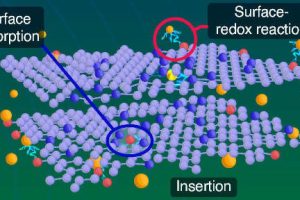At DAC 2024, Efabless celebrated a milestone of 40 commercial companies designed chips using its chipIgnite and Google-sponsored OpenMPW programme. Of these, some are ready for production volumes, the majority are at the prototype/proof of concept stage, said CEO, Michael Wishart. The platform allows start-ups and smaller companies to prototype designs and innovate without having to buy a license, he ...
Tag Archives: research and development
TT Electronics opens power and control R&D Facility in Rochdale
The power and control business of TT Electronics had opened its research, development and manufacturing facility in Rochdale, near Manchester UK, to work on products for “mission-critical aerospace and defence technology”, it said. “TT’s recent acquisitions of the Power Supply business from Excelitas, Torotel and Ferranti Power and Control have enhanced our customer portfolio as well as significantly strengthening our ...
Soft gripper weighs 130g, lifts 100kg
Korean engineers and scientists have developed a soft gripper that can be used to lift 100kg, while weighing only 130g. The device is inspired by weaving and can be made at different sizes, always maintaining large ratio between gripping capacity and its own mass. “Utilising soft, flexible materials such as cloth, paper and silicone, soft robotic grippers acts like a ...
Novel carbonaceous anodes prolong sodium ion battery life
Researchers from Korea and USA have developed an anode for sodium-ion batteries which can still store energy after 1,000 charge-discharge cycles, claims Pusan National University, which worked with the University of Illinois at Urbana Champaign. While sodium is cheaper than lithium, and sodium ion cells can theoretically store plenty of energy, potential electrode materials are not proving equal to the ...
Kyocera gets a prize for its tiny crystals
Kyocera has be rewarded for the ultra-precise plasma processing technology it created to produce miniaturised crystal resonators – developed with Professor Kazuya Yamamura of Osaka University. The process, known as chemical vaporisation machining (CVM), involves a chemical reaction between neutral radicals in the plasma and the surface of the workpiece. It produces crystal wafers with nanometre-level thickness uniformity without damaging ...
European project to further increase the reliability of electronics
A European project has been set up to further improve the reliability of electronics. Called Intelligent Reliability 4.0 (iRel40), it is coordinated by Infineon and has 75 science and industry partners from 13 countries. “Enhancing electronics performance through miniaturisation and integrating more and more functions is progressing steadily,” said Infineon CEO Reinhard Ploss. “Performance and complexity are increasing, as the ...
Comment: 5G – has government learned the lessons of history?
The government must stand ready to seize the semiconductor opportunity that 5G presents and not repeat the mistakes of the past. In 1989, mobile phones were not much smaller than house‑bricks. And few people used them. But the UK government, convinced by its advisers that something very important was about to happen in personal communications, took the imaginative step of ...
Researchers use Wi-Fi signals to make hologram of a room
A holographic imaging process developed by scientists in Munich can generate three-dimensional images of a room by using the microwaves generated by a Wi-Fi transmitter. The result is objects can be tracked as they move through a room, office or factory. Typically optical holograms require elaborate laser technology, but the scientists at the Technical University of Munich (TUM) have generated ...
CBI highlights importance of university research
A report from the Parliamentary Science and Technology Committee has highlighted the need for the UK to improve its performance in the commercialisation of university research. Felicity Burch, CBI head of digital and innovation, agrees and she believes that the UK lags behind competitors on R&D spending. Burch believes the private sector and Government both have a major role to play in addressing this ...
Glasgow researchers build “smartphone” gravity meter to measure volcanos
Scientists at the University of Glasgow have created a very low cost gravity meter which could be used to monitor volcanic activity using commercial MEMS device technology found as accelerometers in smartphones. The result they says is a sensitive detector capable of measuring minute changes in gravity, and at significantly lower cost than a traditional gravity meter (gravimeters). They believe ...
 Electronics Weekly Electronics Design & Components Tech News
Electronics Weekly Electronics Design & Components Tech News









